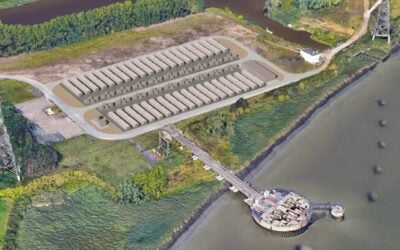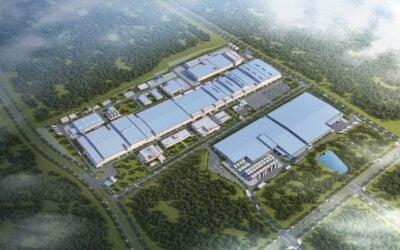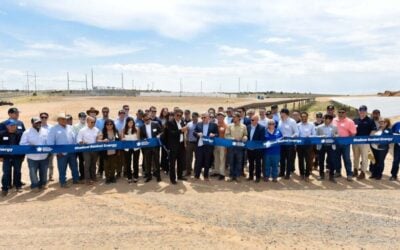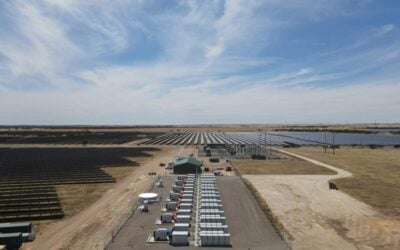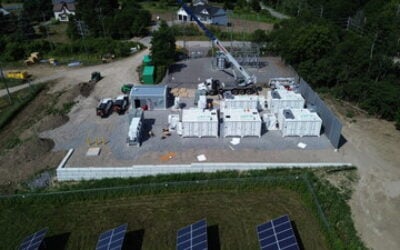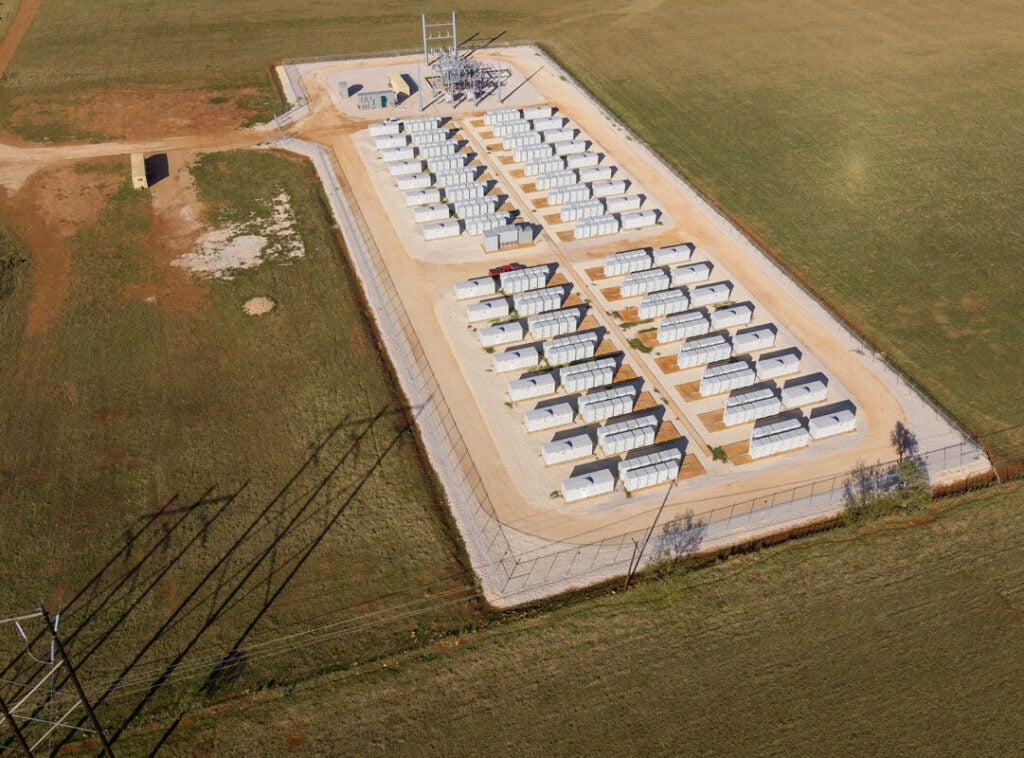
The public engagement phase of permitting for Engie’s Compass Energy Storage project is well underway, after the California Energy Commission (CEC) held an information meeting for the public last week that drew huge interest.
As reported by Energy-Storage.news, Engie recently reached an important permitting milestone in the CEC’s opt-in certification scheme, which started a 270-day countdown for the regulator to approve or deny the 250MW/1GWh standalone BESS project.
The development in question, Compass Energy Storage, has proven contentious with local residents, with the CEC already having received over 1,100 overwhelmingly negative public comments opposing the project.
Opt-in certification programme
After previously being denied a rezoning request from the City of San Juan Capistrano, Engie last year turned to the CEC’s opt-in permitting route for its Compass project.
Try Premium for just $1
- Full premium access for the first month at only $1
- Converts to an annual rate after 30 days unless cancelled
- Cancel anytime during the trial period
Premium Benefits
- Expert industry analysis and interviews
- Digital access to PV Tech Power journal
- Exclusive event discounts
Or get the full Premium subscription right away
Or continue reading this article for free
Under Assembly Bill 205, the CEC’s opt-in certification programme offers an alternative to local permitting routes for BESS projects exceeding 200MWh capacity.
In the wake of the fire at Vistra’s Moss Landing project in Monterey County, California, several government officials began to publicly question the CEC’s permitting authority over energy storage projects, with some introducing new bills to Congress aimed at limiting this power.
One of the most high-profile bills was introduced by Assemblywoman Dawn Addis, who proposed to remove the CEC’s authority over BESS projects entirely, as well as introduce 3,200 ft minimum distances between projects and residential areas. However, as recently reported by Energy-Storage.news, Addis has struggled to progress this bill beyond its first reading.
Despite this, the recent CEC meeting highlighted the appetite amongst members of the public for local authorities to have more of a say during the permitting process.
Tempering expectations
The recent meeting, held in the Capistrano Unified School District Boardroom, was attended by two of the five CEC Member Commissioners who will have the ultimate say on whether to approve the project.
Appointed by the Governor of California and confirmed by the Senate, the five Member Commissioners hold office for five years, with each representing a specific area of expertise such as law, economics or engineering.
The CEC’s Executive Director, Drew Bohan, was also present at the meeting and attempted to temper the crowd’s expectations at the outset.
“To be clear up front, there will be no decisions made today … this is the beginning of the process,” Bohan said.
Bohan also acknowledged receipt of the hundreds of comments already received by the CEC, informing the meeting that he had read “many of them.”
“We’ve already received a number of public comments … it’s clear that a concern on the top of the mind of many of the folks here today and in your community is safety,” said Bohan.
After Bohan, one of the commissioners present at the meeting, Noemí Gallardo, spoke on behalf of the CEC, reiterating its commitments.
“I want to underscore at the outset – safety is our top priority,” said Gallardo.
Gallardo explained how she, along with other officials, including representatives from the City of San Juan Capistrano, had recently visited the proposed project site to get an idea of the scope of development.
Engie highlights safety record
Prior to commencing public comment, Engie North America’s Director of Permitting, Renee Robin, gave an overview of the company’s CEC application and wider portfolio.
With the majority of local opponents to Engie’s Compass project taking issue with the project’s proposed location, Robin also chose to highlight two operational BESS projects developed by other independent power producers (IPPs) or developers within California.
She first pointed to Gridstor’s operational 60MW/160MWh Goleta project, which is located “next to residences and a brewery” in Santa Barbara County. Robin also highlighted Arevon Energy’s 200MW/800MWh Condor Energy Storage project, which is in close proximity to a high school in San Bernardino County.
In keeping with the meeting’s theme, Robin used a large portion of her speaking time to address residents’ safety concerns. “We have a very strong safety ethic at Engie. I don’t say this lightly… We have safety discussions at every meeting,” said Robin.
Despite Engie’s support petition for the project, which had over 400 signatures, Robin acknowledged that “many local organisations are not in favour of the project.”
Tesla 2XL Megapack BESS units put through third-party fire testing
Next to address the public during the meeting was Fire and Risk Alliance engineer, Christian Ng, who worked closely with Engie to complete necessary hazard mitigation analysis and emergency response plans.
Although the cause of the fire at Moss Landing has yet to be determined, Ng attempted to alleviate fears of Engie’s Compass project succumbing to a similar fate.
“This project will be using lithium iron phosphate (LFP) batteries … these are distinctly different from the components at Moss Landing, which utilised nickel manganese cobalt (NMC) batteries,” explained the Fire and Risk Alliance engineer.
Ng also pointed to the differences in layout, stating that although Moss Landing was an indoor facility, where battery separation wasn’t possible.
“The Compass project will be made up of outdoor containerised units, where a fire, if it occurred, would be isolated to one unit,” said Ng.
Ng revealed that the Compass facility would specifically comprise Tesla’s Megapack 2XL units, which have been subjected to third-party testing, including real-world fire analysis.
Following Ng, Tesla Fire Operations Liaison Gary Ashley addressed the meeting and expressed his confidence in battery technology. “I’m a resident of Ripon, where Engie is installing more Megapacks … I have no concerns,” said Ashley.
As covered in Energy-Storage.news, another of Engie’s California BESS projects, the Ripon Reliability project, has been held up by delays. The developer recently managed to secure an extension to its conditional use permit (CUP) after agreeing to additional fire safety mitigation measures.
Potential for thermal runaway
Following the applicants’ presentations, CEC Project Manager Renee Longman outlined the regulator’s opt-in certification process in more detail and then began summarising some of the public comments it had received.
Longman broke down the 1,100+ comments received so far into four main categories: dangers of thermal runaway, general safety of BESS, aesthetics, and proposed location. Longman explained that the CEC would use these comments to guide the scope of its environmental analysis.
In an attempt to further alleviate residents’ concerns, Brett Folks, Manager of the CEC’s Safety Branch, spoke about two high-profile BESS fires and how those projects differed from Engie’s Compass project.
After reiterating the points raised by Ng regarding Moss Landing, Brett Folks then addressed the fire that broke out at Rev Renewables’ Gateway Energy Storage project.
Similar to Moss Landing, Gateway Energy Storage was also brought online in 2020 and utilised NMC batteries installed in a building structure.
“Since 2020, battery storage codes have evolved,” explained Folks, before outlining the industry’s updated approach of utilising LFP batteries within separated containers.
“The containerisation minimises the damage caused by thermal runaway fires and reduces the threat of fire propagation,” said Folks.
Rounding off the CEC’s presentation and before heading to public comment, its Chief of Staff, Robert Chun, reiterated the commission’s commitment to safety.
“The single most important factor in our permitting process is safety… We’ve never had a fire at any storage facility permitted by the CEC, and we intend to keep it that way,” said Chun.
Passionate appeal from Mayor of San Juan Capistrano
A selection of elected officials at the City of San Juan Capistrano kicked off the public comment period, culminating in a passionate appeal from the California City’s mayor, Troy Bourne, for the CEC to reject the project.
“While we can definitely say that battery storage facilities are safer than they used to be … we can also say that they’re not as safe as we would like them to be,” said Bourne.
The mayor’s speech was then followed by around five hours of public comment from over 160 individuals, who raised concerns covering the four main issues outlined by Longman earlier in the meeting.
Since the meeting, the CEC held a Zoom-only meeting to receive comments and on 4 June, closed the public comment period. The CEC expects to publish its findings on the project’s potential environmental impacts during the fall of this year.
The California Energy Commission has until 25 January 2026 to approve or deny the project.
A recording of the meeting has been posted on the Zoom website.

